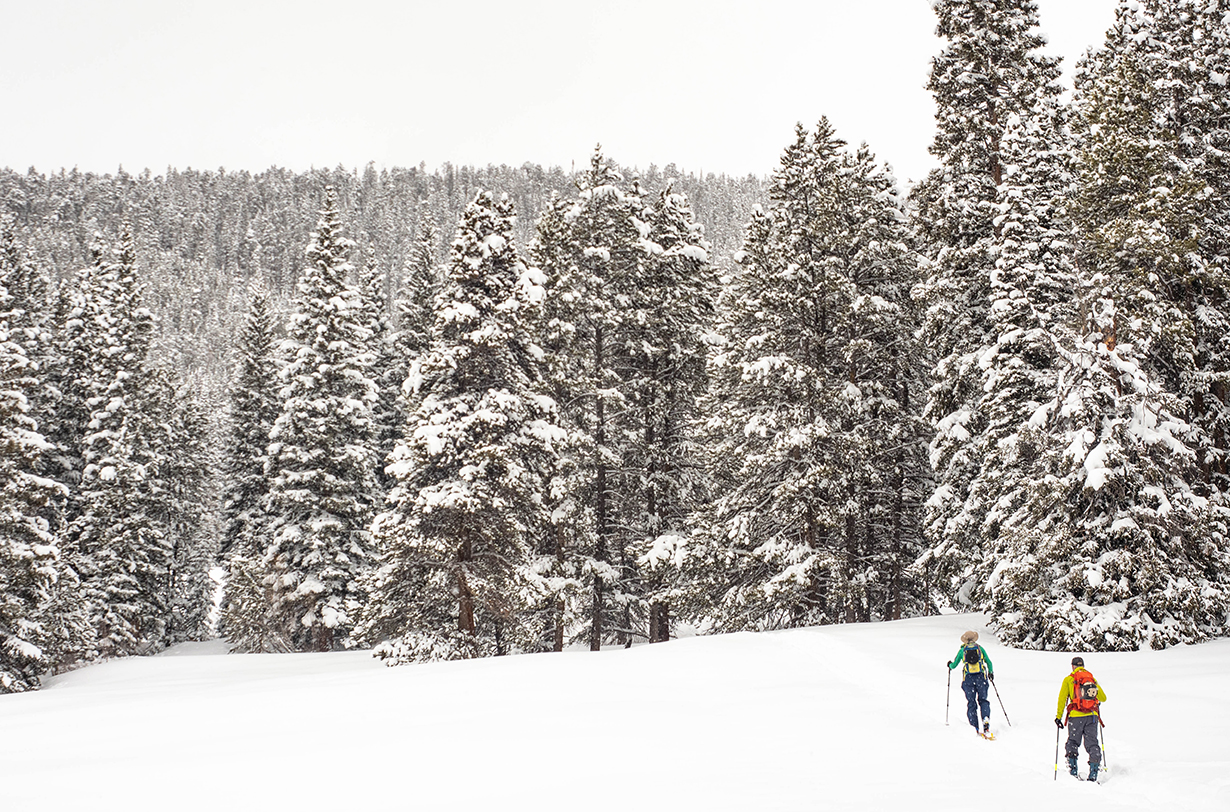
Intro
Paul Forward: Boots, bindings, and skis for ski touring have taken a technological quantum leap over the last 10-20 years and I get as excited as anyone over light, reliable, high-performance backcountry gear.
Unfortunately, it’s possible to spend upwards of $2000 (or much more) on a fancy new ski / boot / binding combo and still have a mediocre gear experience because of bad skins. I would even go so far as to say that, aside from boot fit, skin choice is the single most important gear factor affecting the efficiency and comfort of the ascent portion of ski touring. While the skins of today look pretty similar in lots of ways to the skins I first started using in the ‘90s, there have also been some notable improvements.
I’ve skied a wide variety of skins in the past ~25 years, including such dubious developments as Voile’s snakeskins, multiple variations of a product called “clipskins” that used no glue or adhesive, glueless “Vacuum” and “Gecko” skins, and dozens of different variations of conventional adhesive-based skins. (I never did get to try Fischer’s fish-scale skins though!)
We’ve put out some climbing-skin roundups in the past, as well as reviews of individual models, but now we’re diving into a bit more detail about (1) skins in general, (2) the properties to consider when picking a pair of skins, and then (3) we’re comparing a variety of skins we’ve been using a lot over the past few seasons. We originally posted this article back in 2020, but have updated it for 2022 with a couple new skins and some new notes after spending more time using several of the skins here.
General Properties of Skins
Everyone has different priorities when it comes to skins, but below are the most important characteristics of skins for me. Farther down in this article, we’ll go into greater detail on how specific skins on the market compare in these regards.
One thing that hasn’t changed much over the years is the material used in the fibers or “plush” of climbing skins — the most common materials are still nylon and mohair fibers. Mohair is made from the hair of Angora goats, and in addition to being used in climbing skins, it’s also used in a lot of high-end apparel. The synthetic fiber, nylon, is used for a bazillion different things, climbing skins being just one of them. Mohair and nylon each have their upsides and downsides, which we’ll get into below.
(1) Grip
When a ski with a skin attached is pressured back against the snow as you try to push off and move forward, fibers of the skin engage with the snow and create traction / grip. This “technology” is just about as old as the ski itself (the first “skins” were just animal hides strapped to wooden planks) and it still works pretty much the same as it always has.
It seems that the main factors that play into grip are (1) the type of material being used, (2) the length of the individual fibers, and (3) the orientation of that material relative to the ski base.
As a general rule, nylon fibers (which are often shorter) tend to be grippier than mohair fibers (which are often longer), though there are differences across different skins that we’ll get into below.
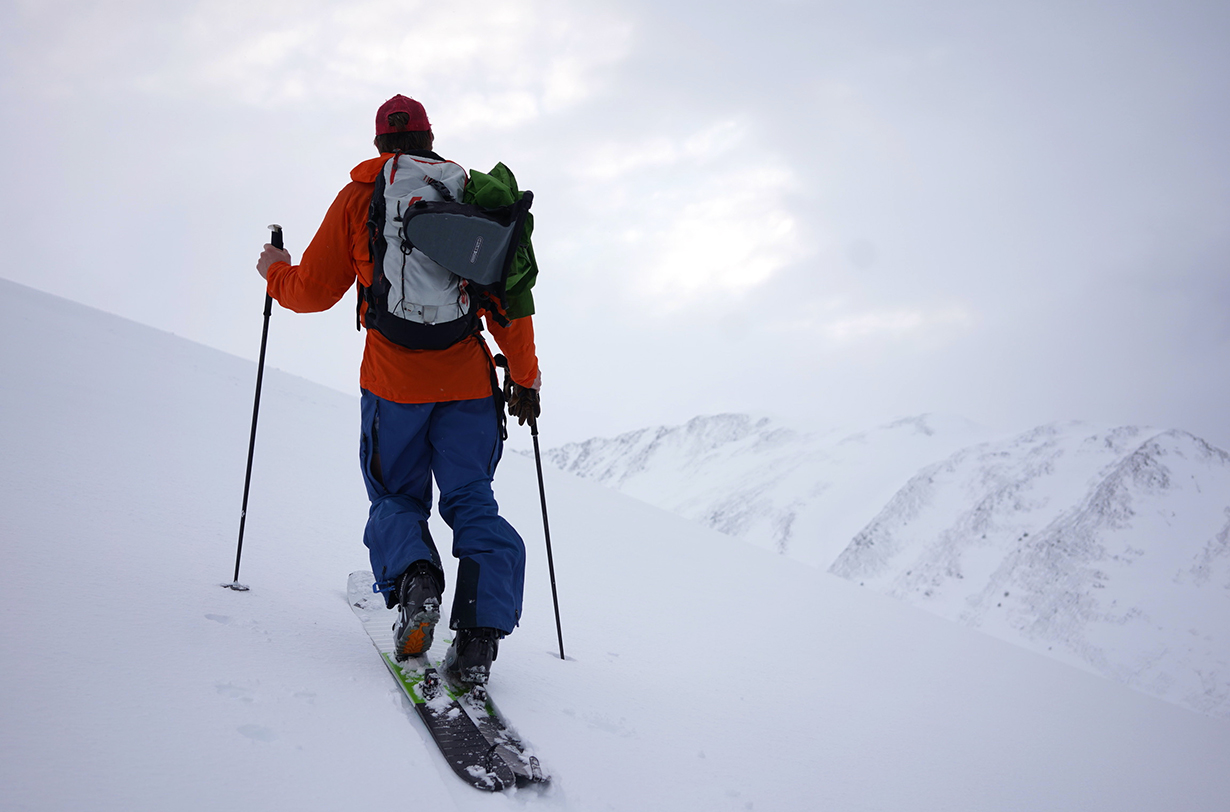
Generally, the skins that offer the best grip don’t glide super well, but some people prefer very grippy skins because they often skin very steep and/or icy tracks where grip is important. Grippier skins can also be helpful for beginners as they’re easier to keep from sliding backward while you work on your technique, though they can also encourage poor technique due to their poorer glide. (If your skins don’t glide well, you may end up picking up your skis off the snow while skinning, instead of the more efficient technique of keeping your skins in contact with the snow during each stride.)
(2) Glide
When sliding forward, some materials create less resistance than others because of the same variables mentioned above in the Grip section. Generally, the better the grip, the worse the glide, and vice versa.
All other things equal, mohair skins tend to glide a bit better than nylon.
Not only does improved glide help you skin across flatter terrain with less effort and more speed, but at least in my experience, it can also help on steeper ascents because it allows you to use more efficient technique by keeping your skis (and skins) on the snow while pushing them forward. I still see plenty of people in the backcountry picking their skis off the snow when they slide them forward. I suspect some of them would be able to break this habit with better-gliding skins, and consequently find themselves moving more efficiently through the backcountry.
(3) Adhesive
Aside from the various “glueless” varieties alluded to above, most skins rely on some kind of reusable adhesive to stay on the bases of your skis. Some adhesives are super sticky and difficult to remove while others are easy to remove but are more prone to falling off your skis when you don’t want them to. And then there are many that fall between those ends of the spectrum.
If you’re like me and you prefer to keep your skis attached to your boots during the uphill-to-downhill transition, the stickiness of your skins’ adhesive will become more important, since trying to contort your body to rip skins while standing and dealing with an extremely sticky adhesive can be pretty frustrating.
All skin adhesives change over time and most will get less sticky the more you use them, though there are some that, counterintuitively, actually get even stickier and “gummy” after extended use. Some of this variation over time can also be impacted by how and where you store and maintain your skins. For best practices on that, we recommend asking the manufacturer of the skins you use, since best storage practices vary between brands.
(4) Durability
Some skins hold up better than others, and the overall durability of a skin will come down to not only its plush / fibers, but also its tip / tail hardware and adhesive. Conventional wisdom is that nylon skins hold up better over the long term than mohair skins. Skins with a thicker plush also tend to last longer than those with a thinner plush. And then there’s a good deal of variance when it comes to the long-term durability of tip / tail hardware and adhesives, which varies between brands and which we’ll discuss a bit below in the comparison section.
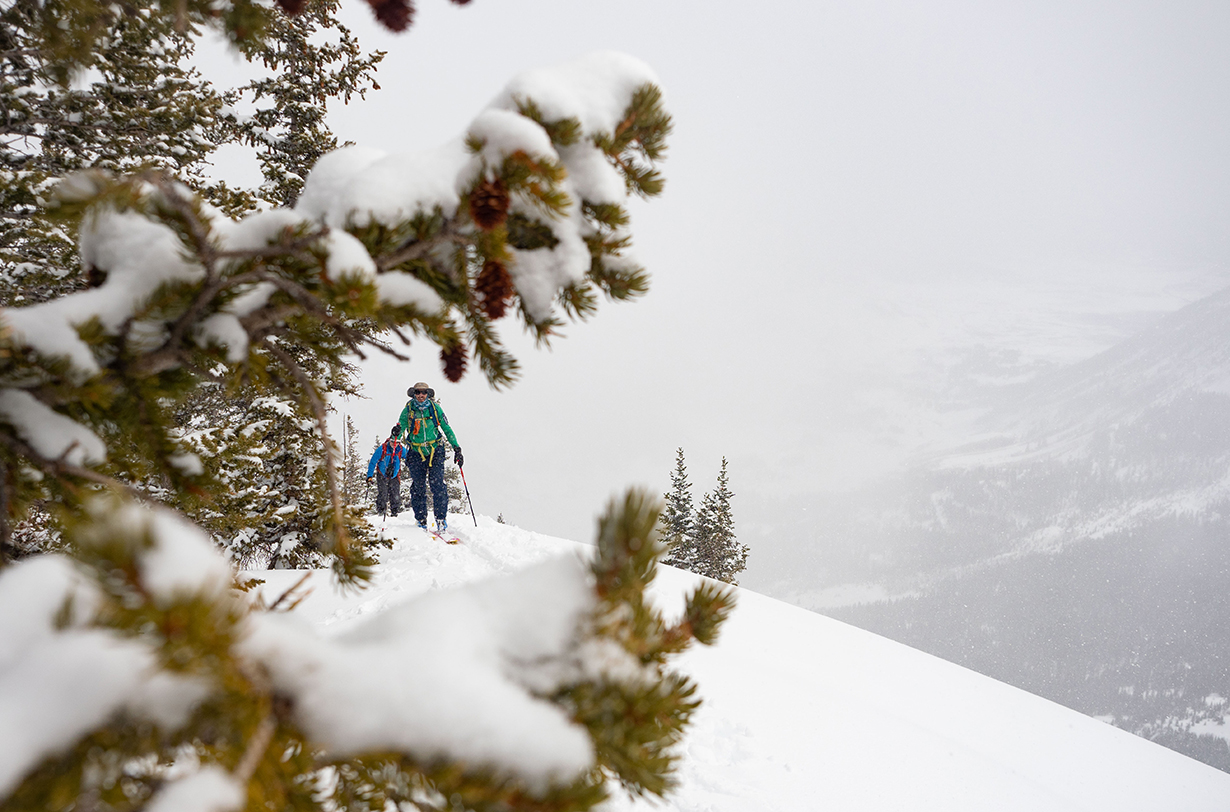
(5) Tip & Tail Hardware
Most modern skins have attachment points at the tip and tail of the ski to keep them in place on your skis. I’ve had some great skins with good adhesive and very nice plush that ruined ski tours because of poor tip and tail hardware. The tip and tail hardware is one characteristic of skins that tends to differ the most across different brands — almost every brand uses a different style of hardware, with each having upsides and downsides.
(6) Packability & Suppleness
I love being able to roll up my skins and shove them into my coat on the descents. When I do put them in my pack, it’s still nice when they are compact and tidy, since it means I have more room for other gear, or gives me the option of using a smaller pack. Sometimes, however, suppleness and packability come at the cost of snow being able to more easily pack up under skins, especially at the tips, since stiffer materials tend to not fold as much and consequently stay flush with the bottom of your ski bases. As with most gear, there are lots of tradeoffs to consider with climbing skins.
(7) Weight
Climbing skin weight is important, but also very tough to quantify (the best way, inconveniently, is to actually get your hands on several different skins).
Pomoca, for example, provides weight-per-surface-area stats for their skins, but most other manufacturers do not provide this info. On our end, it’s tricky to get useful measured weights since there are so many factors that affect skin weight, such as the skin width, length, and tip & tail hardware. And then if you’re cutting skins for different skis, the comparison gets even more convoluted. But in general, the more packable and thin the skin material, the less it’s going to weigh, so below we’ll provide some subjective thoughts on this in the comparisons.
I will say that anyone looking to put together a lighter touring setup should make sure to factor in the skin weight, since that’s weight you’re moving with every single stride.
(8) Setup / Trimming
Most skins come with some version of a razor blade or plastic letter-opener-type device that you can use when cutting skins to the shape of your skis. In more recent years, G3 and Pomoca have included clever devices that make cutting skins easier since they automatically trim away the material over your ski’s edges, rather than forcing you to precisely shift the skin to either side to account for the ski’s edges (which you don’t want covered by your skins). Black Diamond and Contour have recently started shipping their skins with similarly useful cutting tools (we have yet to try them, but they look like they’d work just as well as G3 and Pomoca’s).
A Note on Ski Width & Climbing Skins
One very important variable that affects glide, grip, and glue (and maybe durability?) is the width of the ski being used with your skins.
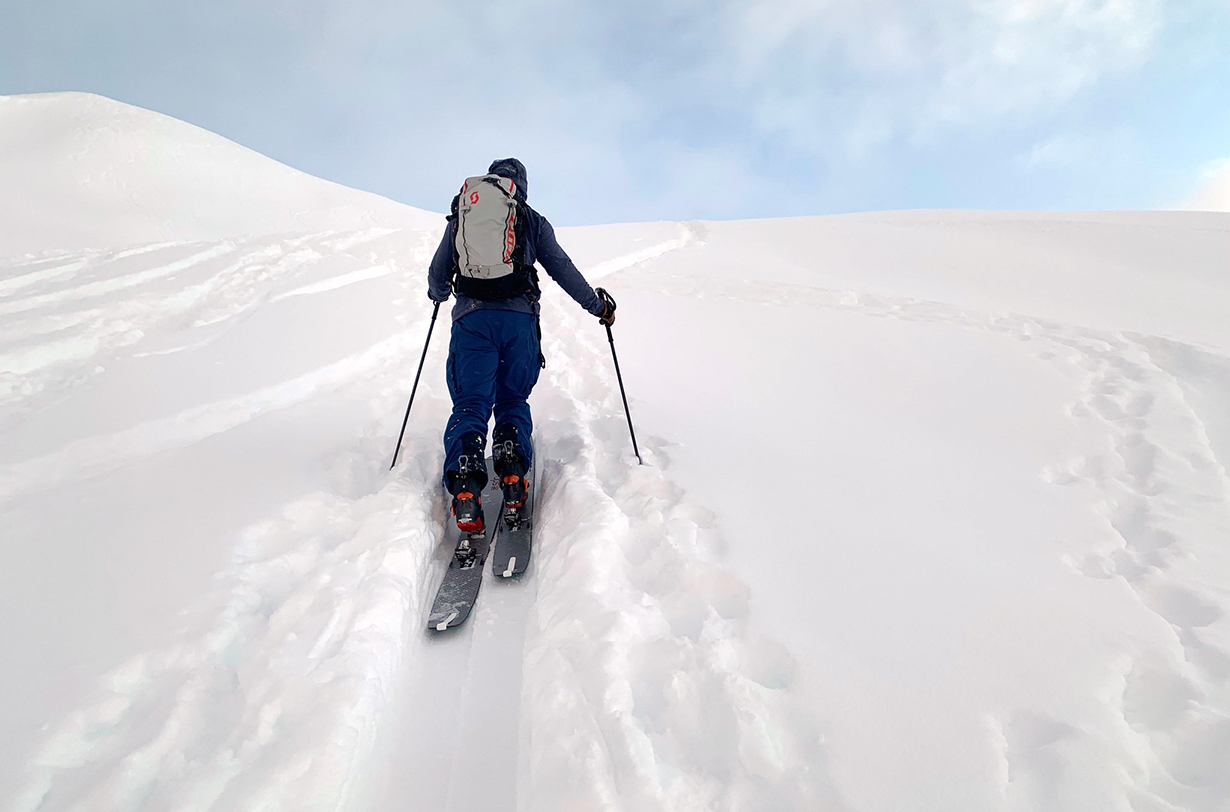
In my experience, really wide skis with edge-to-edge skins generally grip better than a narrower ski with the same skins. On the flip side, wider skis also seem to generate more friction, consequently decreasing glide efficiency. This is all pretty intuitive, given that a larger ski (and therefore, larger skin) creates more surface area that contacts the snow. Because of this, I think the benefits of high-glide / lower-grip skins increase as the ski width increases.
Skin Comparisons
So, with that preface, let’s jump into some of the skins we’ve been using a lot over the past few years and have been able to directly compare to each other. We’ll go through each performance category mentioned above and include our thoughts on how the skins stack up against each other.
We’ll be adding more skins to this comparison in the future, but in the meantime, if the skin you’re interested in isn’t listed here, we’d recommend checking out our individual climbing skin reviews and our Winter Buyer’s Guide.
Luke Koppa has also been using several skins that I haven’t used, so he’ll be chiming in here, too. Some of these skins have been tweaked and/or discontinued, which we’ll note where applicable.
Here are the skins we’re comparing for now:
- Black Diamond Ascension STS (full nylon)
- Black Diamond UltraLite Mix (mohair / nylon mix)
- Contour Guide Pure (full mohair)
- Contour Hybrid Mix (mohair / nylon mix)
- Contour Hybrid Pure (full mohair)
- G3 Alpinist+ Glide (mohair / nylon mix)
- G3 Alpinist+ Universal (full nylon)
- G3 Minimist Glide (mohair / nylon mix)
- Pomoca Climb 2.0 (mohair / nylon mix)
- Pomoca Climb Pro S-Glide (mohair / nylon mix)
- Pomoca Race Pro 2.0 (full mohair)
- Pomoca Free Pro 2.0 (mohair / nylon mix)
- Kohla Vertical Mixmohair (mohair / nylon mix)
Grip
Paul Forward: First, all of the skins listed have sufficient grip for any of the skin tracks I frequent. I haven’t recently done a ton of icy, spring-snow skiing, which is where skins tend to suffer most in terms of grip, but for my limited spring skiing and extensive cold-snow skiing, they’ve done well. I do tend to favor lower-angle skin tracks but still encounter steep, icy tracks on occasion.
The only skins that I had slipping issues with were the Pomoca Race Pro 2.0 but I blame a lot of that on the fact that I was using 100mm-wide, straight-cut skins on a pair of the 105mm-wide Blizzard Zero G 105, which equated to quite a bit of base exposed at the tips and tails. I was also using them on a day with a small amount of soft, light snow that was blown on a firm skin track, which is always tricky.
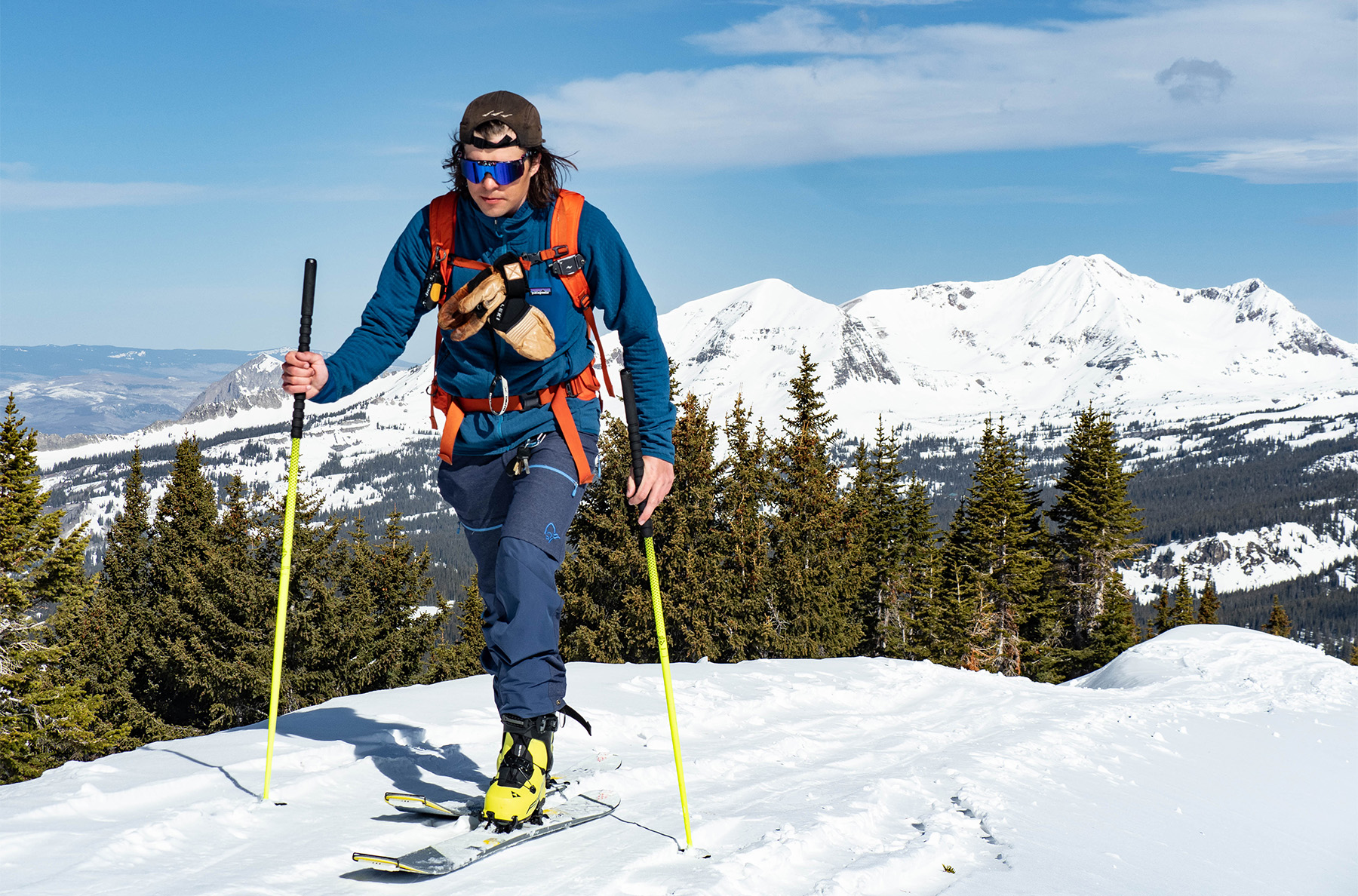
The G3 Minimist Glide, Pomoca Climb Pro S-Glide, and Black Diamond UltraLite Mix are all pretty similar in that I’ve experienced almost zero slippage from any of them in any conditions.
Luke Koppa: I have used the Race Pro 2.0 on some super firm, bumpy spring skin tracks and I will say that I’ve had some frustrating issues with slippage, though it’s important to note that this was mostly while sidehilling, which meant I was only engaging a fraction of the ski / skin (a set of ski crampons would’ve been ideal in these instances). On mellow, icy skin tracks where I was skinning more bases-flat (on a 91mm-wide ski), I have had few issues, provided that I focused on keeping my skis / skins contacting the snow during each stride.
As for the two full-nylon skins here, the Black Diamond Ascension and G3 Alpinist+ Universal, I’d say their increased grip is quite subtle compared to mohair / nylon mix skins like the Pomoca Climb 2.0, Black Diamond UltraLite Mix, Contour Hybrid Mix, and G3 Alpinist+ Glide. Unless you spend a ton of time on icy skin tracks, skin on really narrow skis, and/or just don’t want to spend a lot of money on your skins, I think mohair / nylon mix skins make more sense for a lot of people, rather than full nylon.
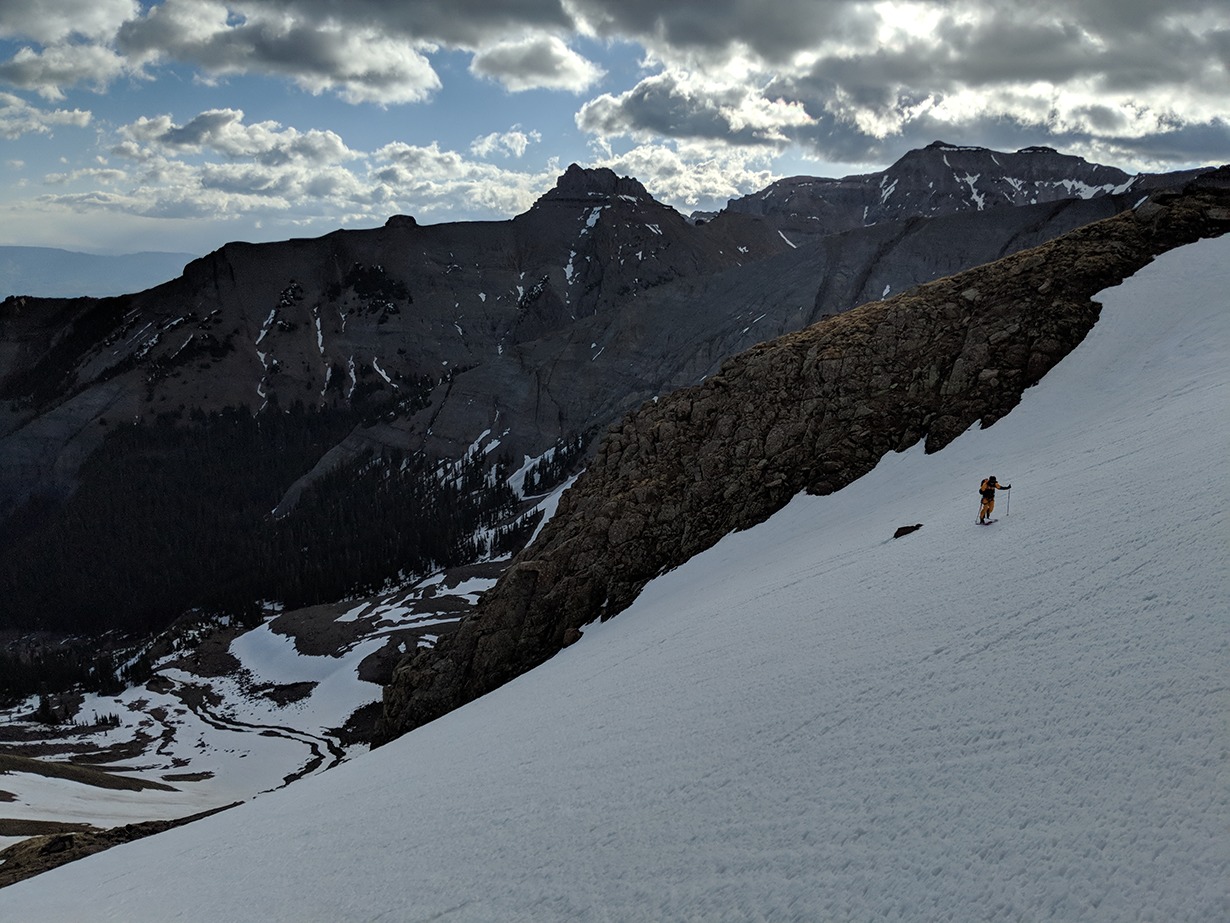
Here’s how we’d rank these skins in terms of grip. And while we are ranking these in a list, it’s worth noting that we’ve found all of the mohair / nylon mix skins to be pretty similar when it comes to both grip and glide. In our experience, you really start to notice a difference when going to a full nylon or full mohair skin and we’ll call out which skins truly stand out from others, so don’t get too caught up in the specific placement of the mix skins in the middle of this spectrum.
Best Grip
- Black Diamond Ascension (full nylon)
- G3 Alpinist+ Universal (full nylon)
- Pomoca Climb 2.0 (mohair / nylon mix)
- Pomoca Climb Pro S-Glide (mohair / nylon mix)
- Contour Hybrid Mix (mohair / nylon mix)
- G3 Minimist Glide (mohair / nylon mix)
- G3 Alpinist+ Glide (mohair / nylon mix)
- Kohla Vertical Mixmohair (mohair / nylon mix)
- Black Diamond UltraLite Mix (mohair / nylon mix)
- Pomoca Free Pro 2.0 (mohair / nylon mix)
- Contour Hybrid Pure (full mohair)
- Contour Guide Pure (full mohair)
- Pomoca Race Pro 2.0 (full mohair)
Worst Grip
Glide
Paul: I’ll just reveal now that the Pomoca Race Pro 2.0 is currently my favorite skin on the market. It has as good or better glide than any skin I’ve ever used, no matter the snow surface. Other pure-mohair skins like the pair that came with my Volkl VTA 88 are also quite good but it feels like the Race Pro 2.0 might be slightly better. The big caveat with the Race Pro 2.0 is that, as the name implies, it is intended for narrow, short skimo race skis. It has been available in 100mm-wide rolls, but currently, Pomoca only lists it as available in a maximum width of 85 mm.
The G3 Minimist Glide, Black Diamond UltraLite Mix, and Pomoca Climb Pro S-Glide are also very good when it comes to glide. And, to be fair, G3 does offer the Minimist in a 100% Mohair version (the “Minimist Speed”) that is probably a more fair comparison to the Race Pro 2.0 (we just haven’t been able to compare the two).
On many days in the backcountry, I’ve toured with different skins on each ski to A/B test them and all of the skins with a mix mohair / nylon plush felt pretty equal. It’s worth noting that most skins seem to offer slightly worse glide when brand new, but this tends to get better after a few runs / days.
All of the pure-mohair and mohair / nylon mix skins listed here offer markedly better glide than any pure-nylon skins I’ve used. For comparison, I grabbed a few varieties of nylon skins that I had laying around from Black Diamond and G3 and the difference in friction between the two is notable.
Luke: Yep, I agree. While I find that most mohair / nylon mix skins grip quite similarly to full-nylon skins in most conditions, I think the difference in glide is much more noticeable. That said, for short tours, I also don’t really mind the increased friction of a full-nylon skin, it’s just that I’d personally pay a bit more for a better-gliding skin (and the other upsides that those skins often come with, like packability and lower weight). I agree with Paul in that most of the mohair / nylon mix skins I’ve used have felt very similar when it comes to glide. The main exception I’ve noticed is Pomoca’s Free Pro 2.0 — it seems to glide a bit better than any mix-plush skin I’ve used, and also offers a bit less grip. It’s not quite as slick and efficient as Pomoca’s Race Pro 2.0, but the Free Pro 2.0 is currently my overall favorite skin because of its performance across the board, and the fact that it’s compatible with a wide variety of skis.
Here’s how we’d rank these skins in terms of glide. And again, don’t focus too much on skins that are right next to each other in this spectrum, as the differences between them are likely quite subtle.
Best Glide
- Pomoca Race Pro 2.0 (full mohair)
- Contour Hybrid Pure (full mohair)
- Contour Guide Pure (full mohair)
- Pomoca Free Pro 2.0 (mohair / nylon mix)
- Black Diamond UltraLite Mix (mohair / nylon mix)
- G3 Alpinist+ Glide (mohair / nylon mix)
- G3 Minimist Glide (mohair / nylon mix)
- Pomoca Climb Pro S-Glide (mohair / nylon mix)
- Pomoca Climb 2.0 (mohair / nylon mix)
- Contour Hybrid Mix (mohair / nylon mix)
- Kohla Vertical Mixmohair (mohair / nylon mix)
- Black Diamond Ascension STS (full nylon)
- G3 Alpinist+ Universal (full nylon)
Worst Glide
Adhesive
Paul: Glue / adhesive seems to be very difficult to get right, and particularly, to do that consistently.
I’ve had many Black Diamond and G3 skins over the years, some with great glue and some with glue that immediately got gummy and was either too sticky or not sticky enough. I’ve had skins come so grippy that they’ve ripped out P-Tex core-shot repairs from my skis and that were impossible to remove without taking off my skis (which I prefer to do when transitioning at the top of a run). I’ve also found that the fatter the skis, the less I wanted really sticky adhesive.
Of all the skins I’ve used, I’ve never used an adhesive that I liked better than the adhesive on the Pomoca Race Pro 2.0 & Climb Pro S-Glide I’ve recently been using. I was able to rip them without taking off my skis, but even after 4-5 laps in a day (often sticking the skins to wet ski bases), they never fell off.
The G3 Minimist’s glue is also quite good but is stickier than I need. Because I broke one of the tail hooks on a pre-production pair (see below) I haven’t put enough days on them to know how much their glue “breaks in” over time, but they definitely stay on skis very well.

Black Diamond’s glue seems to have varied a ton over the years. I have three pairs of the now-discontinued Black Diamond UltraLite Mix skins and at least 100 days combined between them. All of my Black Diamond skins were very sticky when new, to the point where I couldn’t rip them without removing skis. But at this point, they are now very manageable in this regard. I have had the two most well-used pairs of the Black Diamond UltraLite Mix fall off my skis during cold winter days, but they were salvageable.
I almost always ski down with my skins in an interior jacket pocket or otherwise against my base layers to warm them on the way down and highly recommend this strategy, especially for cold days, to preserve the stickiness of the adhesive. The Black Diamond glue has been totally adequate but I don’t think their formulation is as refined as Pomoca’s.
None of the skins listed here have caused any issues with leaving glue residue on my skis, something I experienced a lot with some older Black Diamond and G3 skins in particular.
Luke: Yep, Pomoca’s adhesive is pretty great (my impression of the adhesive on the Pomoca Climb 2.0 and Free Pro 2.0 seems in line with Paul’s notes about the adhesive on the Race Pro 2.0 and Climb Pro S-Glide).
Personally, I think Pomoca and Contour’s “Hybrid” adhesives are my favorites, with Pomoca winning for me when it comes to year-round use. Contour’s Hybrid adhesive is even easier to rip than Pomoca’s, and in most scenarios, I don’t have issues with it failing to stay stuck to the bottom of skis while skinning. Over the course of a few seasons, the Hybrid adhesive does lose some of its tackiness, though I have yet to follow Contour’s washing instructions, which will apparently “revive” the adhesive.
I’ve also spent a lot of time using Black Diamond’s UltraLite Mix skins and their Ascension skins, and I do think their current glue is pretty good. After a few days of use (i.e., a “break-in period”), I am able to rip those skins with my skis still attached to my boots (though it’s not as easy vs. Pomoca & Contour’s Hybrid adhesive), and I haven’t had any issues with them falling off or glopping up after extended use.
G3’s glue has been similarly hit-or-miss with me, but their current skins do seem to have it more dialed than in the past. Their glue is still definitely on the stickier end, but with some practice, I’m able to rip their skins with my skis on. But they still seem to be the stickiest of the skins I’ve used. I still have some G3 Mohair / Nylon Mix skins from 2015 and their glue is now very gloppy / sticky, but I haven’t yet had that issue with their current skins.
The Kohla Vertical Mixmohair skins I’ve used (the pre-cut ones for the Volkl Blaze 106 and Nordica Enforcer 104 Unlimited) feature Kohla’s “Smart Glue” adhesive that I really like; I’d say it’s pretty similar overall to Pomoca’s, though I haven’t been able to test the Kohla version for as many seasons.
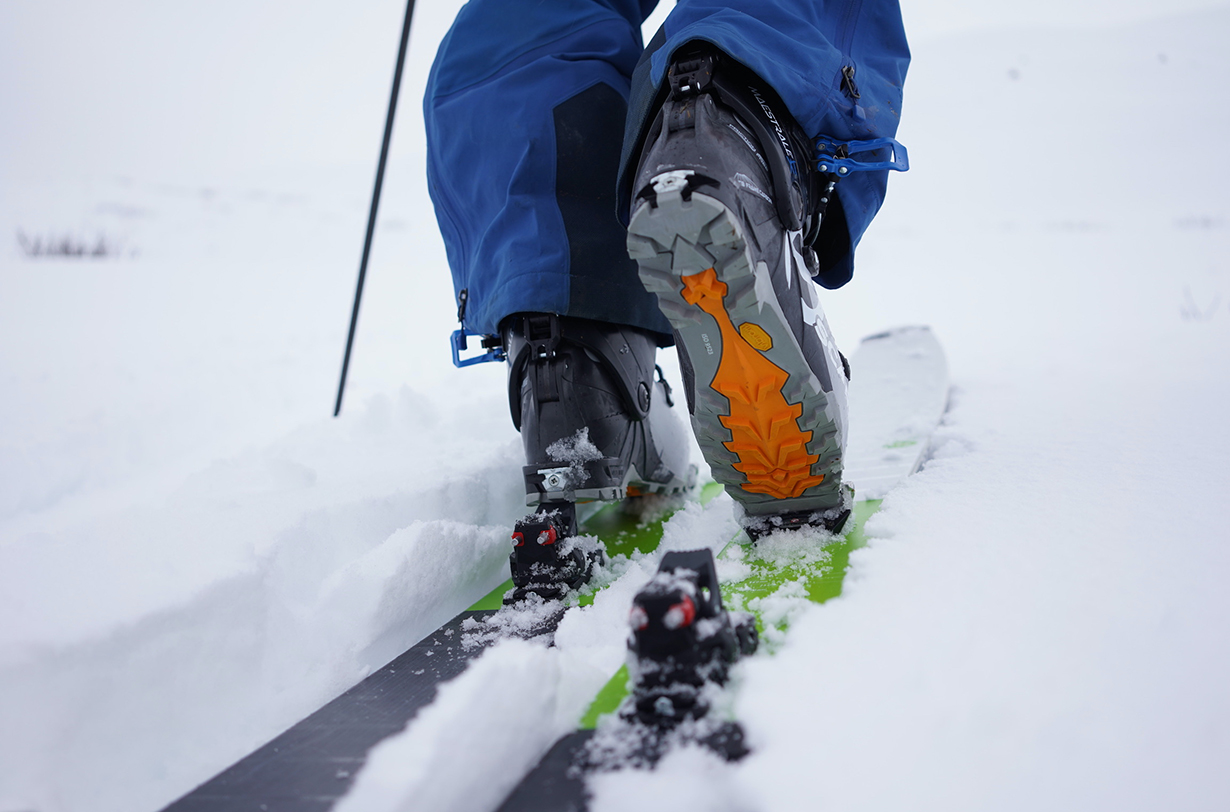
Here’s how we’d briefly summarize the adhesives for each skin brand:
Pomoca: notably high-performance in every way; easy to rip, but also very secure
Contour Hybrid: even easier to rip than Pomoca, but not as tacky, particularly on wet ski bases and/or if you don’t take care of it
G3: Very sticky, to the point that it may be too sticky for some people
Contour “Guide”: Feels like it falls somewhere between G3 adhesive and Black Diamond adhesive; on the stickier end
Black Diamond: Quite sticky, still pretty easy to rip, but stickiness seems to deteriorate after multiple seasons
Kohla “Smart Glue”: Similar to Pomoca, a bit stickier / more difficult to rip
Durability
Paul: Most people have concluded that nylon plush tends to be more durable than mohair plush. While I’m not disputing that, I think it’s also worth trying to quantify what that actually means for the average skier.
I’ve personally logged at least 80 days on an old pair of Black Diamond 100% Mohair skins (the old black ones) without significant signs of damage or a notable decrease in performance. I don’t doubt that Nylon skins hold up even better, but I think we all need to ask ourselves just how many days we put on a pair of skis / skins each season and whether getting, for example, a 4th season vs 2-3 seasons out of a given skin is worth dragging around a less efficient skin, more weight, and more bulk. Personally, I’d rather buy a new pair of skins slightly more frequently and have a much nicer time each day I’m on a skin track.
Water resistance is another important durability variable. So far, all of the skins I’m discussing here have done equally well in this regard. They all have excellent water resistance when new and have gradually trended toward soaking up more water the longer I use them. I haven’t had “glopping” conditions too much in the past few seasons, and will update this review if I notice significant variability between different skins.
I discussed glue durability above and won’t revisit that here.
Hardware durability is another matter. I’ll get into the actual hardware functionality and ease of use below, but here I’ll address how well the different hardware has held up during my use.
Overall, Pomoca’s hardware seems to be the most bombproof of the skins I’ve been using. The tip pieces seem just about indestructible and are quite simple and robust in design. The Pomoca tails feature a stretchy rubber piece with a fairly thick plastic clip. I’ve had zero issues with this and I tend to pull on this stuff pretty hard, especially when ripping skins with skis on in tricky locations, like steep sidehills.
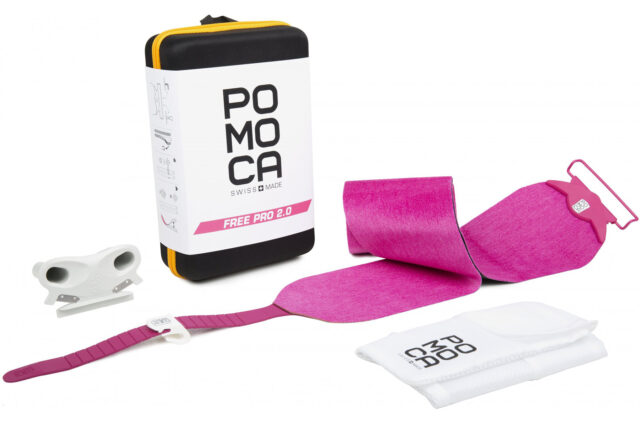
The Black Diamond hardware has been slowly changing over the years, but overall, with their longstanding “STS” hardware receiving an update for the 21/22 season. We’re fans of the new hardware, since it offers a slightly more streamlined and secure attachment at the tip, and is more easily replaceable. The now-discontinued UltraLite Mix skins mentioned here are the exception, which save weight by utilizing a Dyneema cord to connect the tip bar. While I initially found this to work quite well, I’ve had issues with all 3 pairs of my UltraLite Mix skins. What usually happens is that the Dyneema cord pulls free from the plastic tip piece. I’ve usually been able to get it back in working order without having to take apart the tip assembly, but more than once, I’ve had to resort to a screwdriver to get it all back together. It’s never been a catastrophic failure because I’ve always been able to fix it, but it’s quite annoying when it happens. I’ve started being much more careful with how much pressure I apply to the tips of the UltraLite Mix skins.
[Editor’s Note: For the 22/23 season, Black Diamond discontinued the UltraLite Mix and tweaked the GlideLite Mix. The 22/23 GlideLite Mix, as well as a pure mohair version, the GlideLite Pure, feature Black Diamond’s recently revised STS hardware, but we haven’t tried the latest plush materials. The old GlideLite skins were fairly similar to the UltraLite Mix in terms of grip and glide, but not as thin, supple, and packable.]
The rubberized tail straps on the Black Diamond skins used to crack and break quite often after heavy use, but it seems like Black Diamond has changed the material slightly so that they are now more durable.
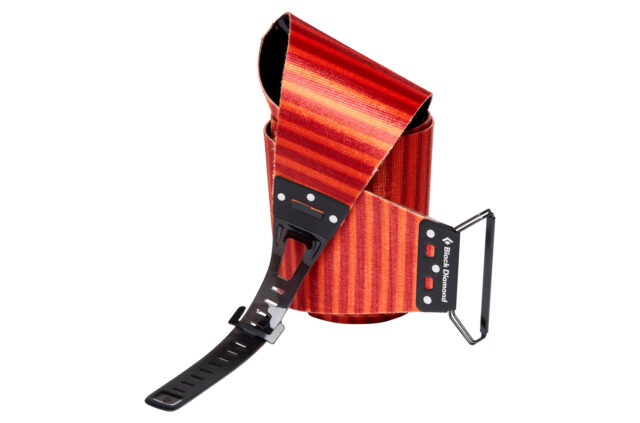
I really like the tip hook system on the G3 Minimist since it’s simple, lightweight, seems quite strong, and works well with really wide ski tips. The tail system features a simple camming system that slides on a piece of strong, rubberized material. Unfortunately, on my third day using the Minimist skins, the cam device for the tail somehow fell apart. I’m not even sure how it happened, but at the top of a mellow, straightforward skin track, I reached back and part of the system was missing so that the little metal hook was just hanging loosely off the tail of the skin and could no longer be used to cam and attach. G3 did say that this issue should be resolved with the currently available Minimist skins (our pair was one of the first batches) and it would definitely be covered under their warranty.
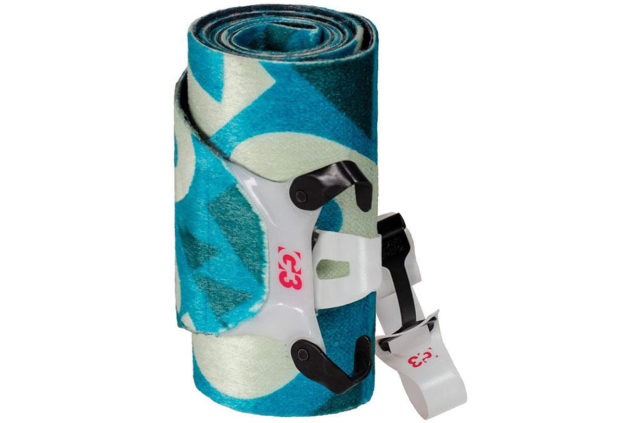
Luke: Black Diamond’s standard “STS” attachment system has always been reliable for me, and I think the latest version is even better, with a more secure-feeling connection and a slight reduction in snow creep at the tip.
I haven’t used the G3 Minimist hardware, but I will say that I have several G3 skins with their “Alpinist+” tip and tail hardware and I have not experienced a single durability issue. I’d argue that hardware is the burliest option out there, but the significant drawback is that the Alpinist+ skins’ big plastic pieces at the tip and tail hamper packability to a significant degree. G3 recently started offering their simpler “Escapist” skins that kind of split the difference between the Minimist and Alpinist+, but we have yet to try them. What I can say is that, across the board, I’ve found G3’s skins to offer the most secure connections at the tips and tails of skis with twin tips or otherwise more difficult tip and tail shapes.
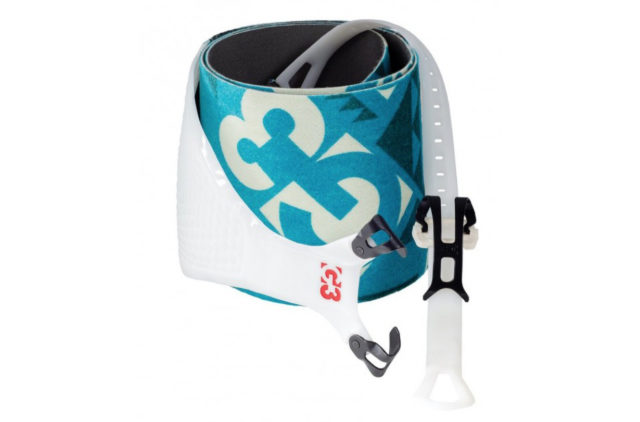
Contour’s hardware is very similar to Pomoca’s, with a simple bar for the tip and a plastic camming clip for the tail. After about 70 days on various Contour skins, I haven’t had any durability issues with them, and their thin textile tail strap is a bit more packable than Pomoca’s thicker rubber one.
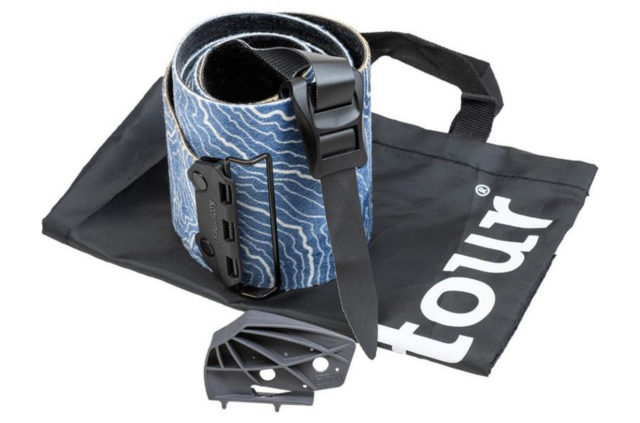
The hardware on the Kohla Vertical Mixmohair is similar to Pomoca’s system and I haven’t yet had any durability issues, though the Kohla tail strap is much thicker / rubberized, so I find it a bit more difficult to adjust vs. Pomoca’s tail strap.
Tip & Tail Hardware
Paul: The most functional tip / tail kit I’ve ever used is the current Pomoca “Ready2Climb” system found on versions of the Climb Pro S-Glide, Climb 2.0, and Free Pro 2.0 discussed here. It doesn’t look fancy, but the tip hook is simple, light, and tough; the tail hook has the perfect amount of stretch to be secure, stays in place on any ski with a flattish tail, and seems quite durable. Pomoca also offers a “twin-tip” style tail hook for more rounded-tail skis, but I haven’t tried it.
The Black Diamond UltraLite system also works quite well. The tip fits a wide variety of skis but has the durability concerns mentioned above. I prefer to use the tail hook in a slightly different manner than intended, wherein I snap them in place so that the rubbery part is sandwiched between the ski and the metal hook. I find that this is more secure, especially for more rounded tail shapes.
As I mentioned above, I think the G3 Minimist tip system is quite good and seems very durable and versatile. The tail hook / cam worked quite well until the plastic piece that holds it together popped out somehow and made the tail system unusable, though we’re hoping to find that issue resolved with the current versions we’ll be testing this coming season.
Luke: I agree for the most part.
I think Pomoca’s standard tip / tail hardware (i.e., not their specialized race-ski hardware) is very reliable and seems to work well on most skis. I’ve used the regular tail hook / strap on some skis with twinned tails and haven’t had any significant issues with the tail clip falling off, though I do think its important to make sure you have the tail clip centered on a rounded tail, or else it can start to slide to either side.
Black Diamond’s regular STS hardware and the minimal hardware on the UltraLite skins seem to work well on most skis. I do think that the tail hardware from Pomoca and G3 does a bit better on skis with very rounded and / or twinned tails, but I still rarely have Black Diamond skins’ tail clips come off most skis.
I haven’t used G3’s Minimist hardware, but their Alpinist+ hardware is easily my favorite of any skin in terms of staying on all sorts of skis. It works well on skis with square-shaped tips, it works well on skis with rounded tails, it works well on skis with twinned tails … it’s worked well on every ski I’ve ever put it on. The main downsides to the Alpinist+ tip / tail system are that (1) they don’t let you cut them shorter since the hardware is glued / laminated to the skin and (2) they’re by far the least packable due to the extended plastic reinforcements.
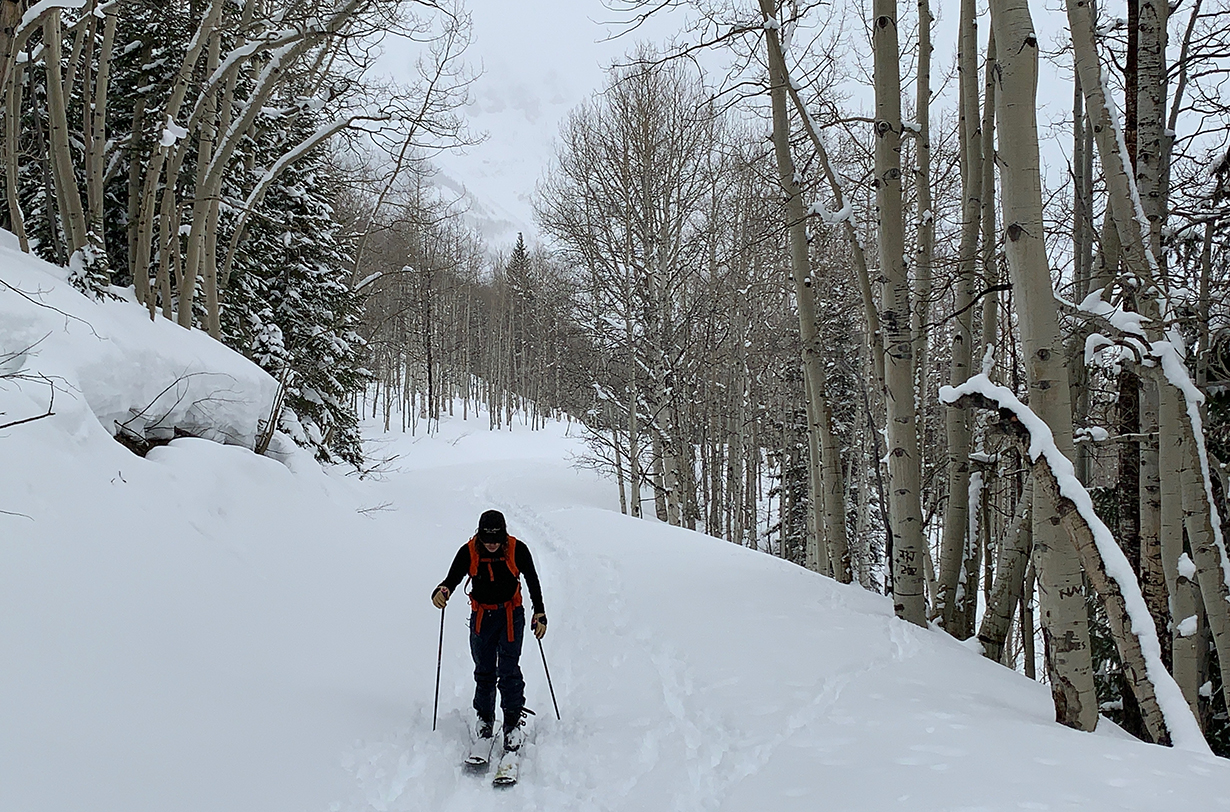
Contour’s hardware is pretty similar to Pomoca’s, with a simple tip bar and large, plastic clip at the tail. The Contour tail strap is less stretchy and more slippery than Pomoca’s, and I find that it doesn’t work quite as well with rounded and/or twinned tails compared to Pomoca and G3. But on any ski with a flat and/or squared-off tail shape, I haven’t had problems with Contour’s hardware falling off.
As mentioned above, the hardware on the Kohla Vertical Mixmohair skins is very similar to Pomoca, with good all-round performance, though I don’t think it stays put quite as well on rounded tails.
Packability, Suppleness, & Weight
Paul: When comparing any of the skins I’ve been discussing here with the box of old skins I have, the most notable thing about the newest ones is how thin, supple, and packable they are. Even skins that are only 3-5 years old feel quite big and stiff compared to the ones I’ve been using the past few seasons.
The obvious benefit of thin, supple skins is the weight savings and packability. To me, weight is very important but so is packability. As I’ve mentioned above, I almost always stash my skins in a pocket or otherwise in my jacket and, especially with fat pow skis, being able to do that is a lot easier with these thin, supple skis.
The downside is that the skin material sometimes gets so supple that it’s easy for snow to creep under the edge of it while skinning. Of all the skins listed here, I had this issue most often with the Black Diamond UltraLites. This is probably related, at least in part, to the narrow tip attachment point that doesn’t provide much support for the surrounding material.
The best combination of integrity and suppleness I’ve used is the G3 Minimist Glide, which features a stiff “carbon fiber insert” at the tip to reduce the snow creep. Based on my limited time with them, it seems like this works quite well and is a great solution to the problem.
The Pomoca Race Pro 2.0 & Climb Pro 2.0 S-Glide also seem to have just enough integrity to keep out the snow creep. This is also aided by the wider tip connection of the Pomoca Ready2Climb system.
Luke: Yep, I’ve had similar issues with snow creep and the old Black Diamond UltraLite. This seems much less pronounced on the stiffer, thicker, heavier, less supple Black Diamond Ascension, and I imagine the newer GlideLite skins would be similar, due to them sharing the new STS attachment system. Black Diamond’s Ascension skins are pretty stiff and thick, in line with the G3 Alpinist+ Universal, and those two are the bulkiest, least packable, and heaviest of the skins here (though Black Diamond’s more minimal STS hardware means it’s a bit more packable).
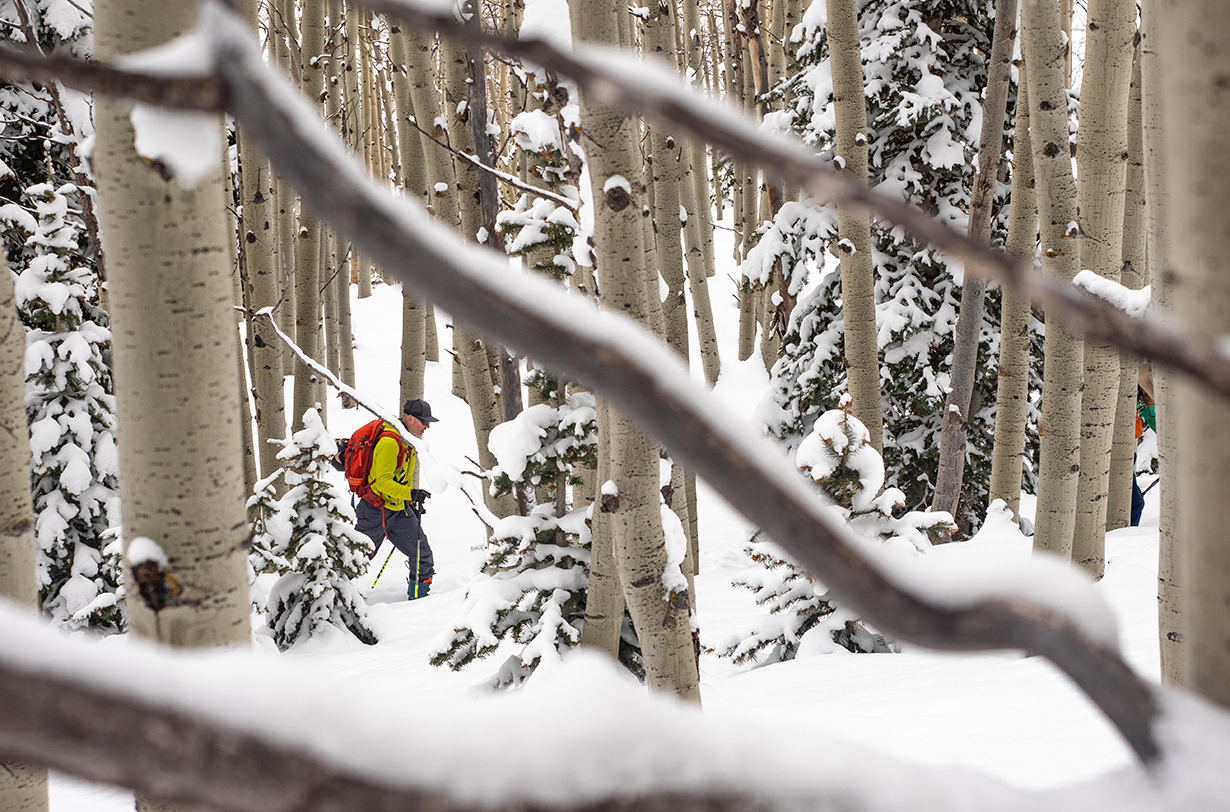
G3’s Alpinist+ skins use very different hardware compared to anything else here, with extended plastic sections at the tips and tails. While I rarely have major problems with snow creep, I do think G3’s standard system is the best in this regard. On the flip side, those big plastic sections also seriously hamper the packability of G3’s Alpinist+ skins, and if you love to roll up your skins, doing so is pretty difficult with those big plastic sections (despite the skin material itself being fairly thin on the Alpinist+ Glide). I also like to stash skins in my jacket, so personally, G3’s Alpinist series doesn’t really have a role in my quiver.
Contour’s Hybrid Mix, Hybrid Pure, and Guide Pure skins all feel pretty similar in terms of suppleness and packability. I’d say they’re all quite similar to the Pomoca Climb 2.0 in those regards — i.e., less supple, thicker, and heavier than Pomoca Free Pro 2.0 and Race Pro 2.0, but notably more supple and thinner than the Black Diamond Ascension and G3 Alpinist+ Universal.
The Pomoca Race Pro 2.0 skins I have are cut for the 178cm-long, 91mm-wide Majesty Superwolf, so it comes as little surprise that they’re by far the smallest / most packable skins I’ve used. But the skin material itself is also just very thin and pliable, and I’d love to put a pair on my fatter skis since the packability (and glide) benefits would be much more exaggerated on a larger ski. That’s not currently possible, due to the limited size range of the Race Pro 2.0; fortunately, the Free Pro 2.0 mostly solves this for me. It’s actually a tiny bit lighter than the Race Pro 2.0 (by surface area), but is designed to be used with wider skis. It doesn’t glide quite as well, but it’s currently my favorite because it blends skimo-esque glide and packability with sizes and hardware that pair well with wider freetouring skis.
The Kohla Vertical Mixmohair skins are pretty similar to the Pomoca Climb 2.0 in terms of suppleness and packability — better than average, but not exceptionally supple or packable. They do seem to resist snow creep a bit better than the Pomoca Free Pro 2.0, though.
While, for the reasons we noted above, skin weight is difficult to quantify, the Pomoca Free Pro 2.0, Pomoca Race Pro 2.0, and Black Diamond UltraLite Mix seem to be the lightest of the skins here. The other mohair / nylon mix skins seem fairly similar to each other in terms of weight, and the full nylon Black Diamond Ascension and G3 Alpinist+ Universal are the heaviest.
Setup & Trimming
Luke: In what is a great move for the industry, it seems as though almost every manufacturer now includes a cutting tool that automatically cuts away the skin above the ski’s edges, rather than requiring you to precisely shift the skin to either side to account for the edges. We haven’t yet used Black Diamond and Contour’s tools, but G3 and Pomoca’s are excellent. For any of them, I’d recommend clearing the blades of any plush / adhesive residue from previous cuts, and encourage you (and myself) to avoid rushing the job. I’m quite impatient, and even with these useful tools, I’ve still ended up with sloppier trimming jobs than I could have if I just went a bit slower and paid a bit more attention to keeping consistent pressure on the tool, skin, and ski. Do so, and just about anyone can end up with a very nicely trimmed set of skins.
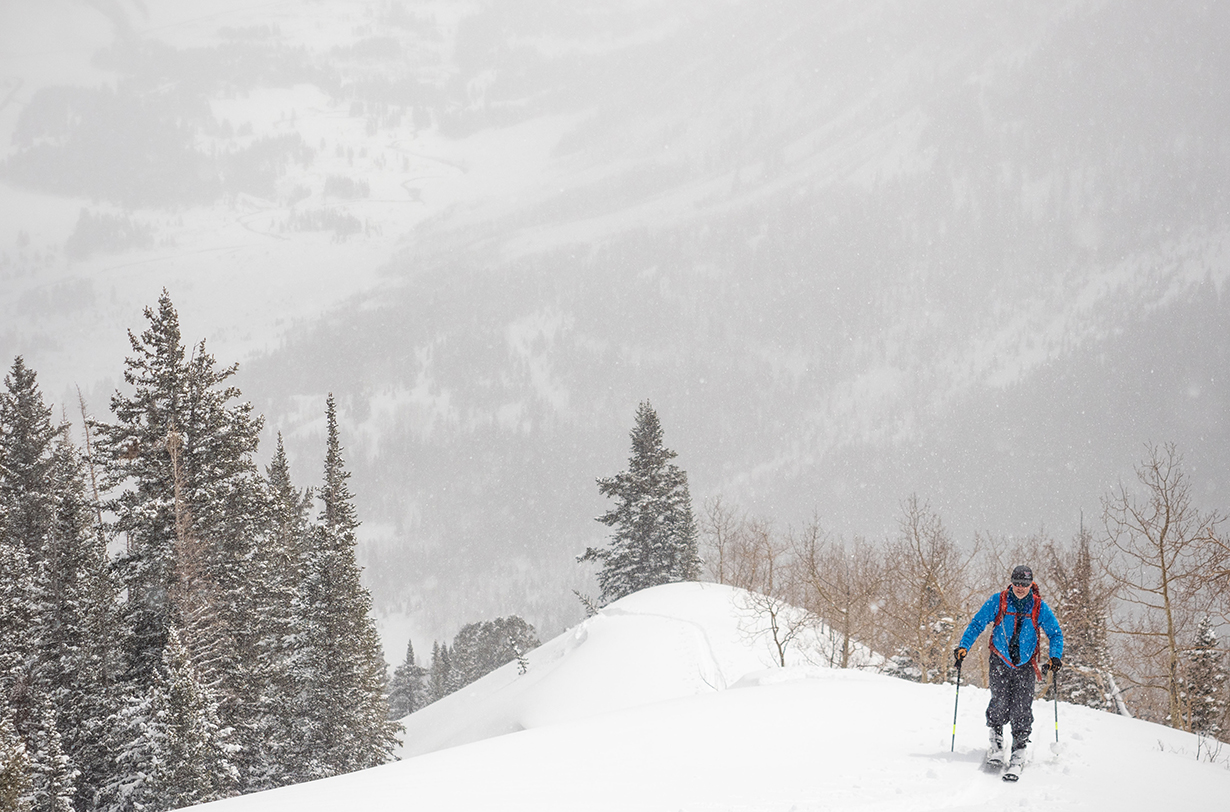
Final Thoughts
Paul: The Pomoca Race Pro 2.0 is my favorite skin of the current options I’ve tried. I love the glide; the grip is ample for anything I do (especially with wide-ish skis); they have simple, durable, and well-designed hardware; and the adhesive is the best I’ve ever used. Unfortunately, they are no longer available in ~100mm-wide rolls, which limits their applicability to narrower skis.
I was a big fan of various Black Diamond and G3 skins for many years but the Pomoca Race Pro 2.0 is excellent. I also liked the Pomoca Climb Pro S-Glide but, to me, any small gains in durability and grip of the Climb Pro are usurped by the lower weight and better glide of the Race Pro 2.0. Given the option, I’d put Race Pro 2.0’s on all of my skis.
The G3 Minimist Glide has a ton of potential and I’d love to try their full-mohair Minimist Speed version, given my preference for maximum-glide Mohair skins.
The Black Diamond UltraLite Mix has long been a favorite of mine due to its glide, suppleness, and weight. But now that I’ve tried the Pomoca Race 2.0 (and the G3 Minimist, if I have better luck in the future with the tail hooks), they win for me.
Luke: I guess I have less conclusive thoughts than Paul — mostly, I’ve just been really impressed by all the recent skins I’ve used.
I do agree with Paul in that the Race Pro 2.0 is a very impressive skin, and I think that’d be my choice for most of my narrower skis. For my wider skis, I’d opt for the Pomoca Free Pro 2.0, primarily just due to its width / length options, and because it’s even more packable (though it doesn’t offer quite as good of glide). But the Free Pro 2.0 has been plenty grippy for me, it glides pretty much as well as some pure-mohair skins I’ve used, it’s exceptionally packable, I love Pomoca’s adhesive, and Pomoca’s hardware has been reliable so far.
If I were skinning on a ski with abnormal tip and/or tail shapes, I still love the security of G3’s various hardware options. However, I prefer a less tacky adhesive.
Contour’s Hybrid adhesive is still one of my favorites, and I’d be happy using their Hybrid skins on just about any of my skis. My only real complaint with them is that they’re bulkier than the Pomoca Free Pro 2.0 and Race Pro 2.0, but I wouldn’t be upset if I had Contour Hybrid skins on all my skis (though I’d probably have to be a bit more vigilant about cleaning them to keep their adhesive somewhat sticky).
In the more generalist category, I still get along really well with the Pomoca Climb 2.0 and Kohla Vertical Mixmohair. Neither have any major flaws in my experience, and they’re a bit cheaper than some of the fancier models mentioned here. Mostly, I just want skins that glide a bit better and pack down a bit smaller than those two do.
For me, I don’t see any need in my skin quiver for a full-nylon skin like the Black Diamond Ascension, G3 Alpinist+ Universal (or Big Sky Mountain Products’ nylon skins, which reviewer Cy Whitling loved). But those skins also tend to be more affordable and durable, so they still warrant strong consideration from those on a budget or those new to backcountry touring. If you’re able to spend a bit more, though, I’d encourage most people to look to any of the better gliding, more packable mohair / nylon mix skins listed here.
So, in sum, all of these skins have their place in the market, and we hope that this guide has helped you figure out which ones should be on your list next time you’re in the market for a new pair of skins.

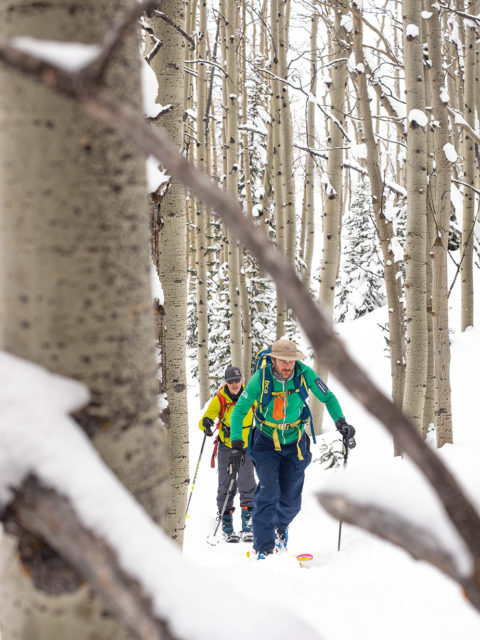
Just buy Pomoca skins. I’ve tried G3 and BD and it’s worth spending the extra bucks for skins that just work and don’t gunk up.
I think one aspect was missed in this review: the choice to fit skins to the widest or narrowest part of the ski. Put differently: to choose a skin width matching the ski waist and not trim it, or to choose a skin width matching the ski tip width and trim the whole profile. Thoughts on pros/cons? Especially on wide skis I go for the narrow option without trimming. Why would I want all that extra skin near the tip and tail where it’s not usually contacting snow anyways? I’ve heard from other folks that this allows more snow to creep under, but I haven’t noticed that being any worse than normal personally.
That’s a really really good article. I’ll read it again when it feels more like it’s snowing.
Thanks for the review, skins are indeed often overlooked. After many years on G3 nylon skins I switched to Colltex mohair and have never looked back. I’ve tested the Pomoca skins out with 4Frnt skis and they are really excellent. I love the efficiency of smoothly gliding skins.
One thing that I’ve observed is that people new to ski touring often have difficulty with proper form, keeping the weight on the heel and end up sliding backwards on steep uptracks. While I’m personally fully bought in to the mohair skin, higher grip skin might be more suitable to newby tourers who are less confident. The chaos and terror of sliding backwards can ruin a fine day for someone new to the sport. Once they get their form dialed I’ll push them towards mohair.
Poor tip and tail hardware can certainly ruin a nice skin. I had to replace my Coltex tail attachment with the G3 aftermarket tails. The original tail clip kept sliding off my twin tip skis. Thankfully the modification has been bombproof since.
From someone who’s a relative newcomer to backcountry skiing , thanks again for these reviews and comparisons. I do have one question though. I’m getting close to pulling the trigger on a new pair of skis and have narrowed it down to a few different specific models , one of which is the 4FRNT Raven. Then I found out that there will be a separate version of that ski that comes with Pomoca Free Pro 2.0 skins, so my question is how do those skins compare with the ones in this guide? My apologies for being so long winded and thanks in advance. Cheers!
Good question — that’s one of the skins that we will add in the future, since we only just started spending time on it late this spring. But in our initial experience, it seems like it falls between the Pomoca Race Pro 2.0 and Climb 2.0 in most regards. I.e., it glides quite well, is very packable, and doesn’t quite match very fast-gliding mohair skins like the Race Pro 2.0 but offers slightly better grip. Overall though, it feels like a very good pairing with the new Raven, particularly if you’re not skinning on super icy skin tracks very often.
Great info. I’ve been on pomoca climb pro for a few years on 5 pairs of skis. Hundreds of thousands of feet skinned in all conditions. So reliable. I barely use skin wax on them in spring. Skin failure can ruin your day, or much worse.
This is a very nice guide, although not really relevant to what I ski. Almost all of my touring is spring west coast after the lifts close. Therefore it’s icy on the way up, and all I ever want is more grip. Ski crampon or booting in spikes are options but I’d rather stay on the skins as both of those are slower. So my question is what is the best grippy skin on the market for steep and icy?
Most of our reviewers have preferred the Black Diamond Ascension or Big Sky Mountain Products Nylon skin for that scenario. We’ve got a little bit of time on G3’s Alpinist+ Grip skins, and those seem promising and could arguably be the best choice, but we don’t yet have enough time on them to confirm. But in our experience, most nylon skins are pretty similar overall in terms of grip, and the BD Ascension and BSMP Nylon also glide a tiny bit better than some other nylon skins. At least in my experience, if conditions are both icy and bumpy / inconsistent, I find that ski crampons make way more of a difference than switching to any different type of skins, but nylon’s the best choice for getting maximum grip out of your skins.
Question seems a bit dubious. Ski crampons are not used without skins, nor are they slower (well I guess if you rip skins when you put on your ski crampons, that certainly will be slower). My point is that grippier skins are not substitutes for ski or boot crampons in any scenario, nor vice versa.
In my honest opinion, based on my own learning curve and that of many touring partners over the years in all seasons, is that needing more grip on your skins than is provided by mohair/nylon mix skins is very nearly always an issue of technique, balance, planning, etc — eg: inexperience. You can buy skins with more grip, yes, but they don’t actually exist because anyone _needs_ that level of grip. They exist because its cheap to make them that way and you can sell them as a budget alternative. Inferior product (no glide) but lower price. It makes complete market sense and explains why the worst backers and worst glues all tend to be combined. Or you can put some better glue on it (or not) and market it as extreme grip for extreme skin tracks…
Don’t fall for the marketing, that full nylon skins are for extreme grip scenarios. No pro athletes are reaching for inferior skins because their touring routes require more grip. They are for tight budgets, and will work pretty well for complete beginners. Beyond that go for a mix, and for advanced users who understand the target conditions and use cases, full mohair.
Nice review!
I’m also a Pomoca convert after many years of BD. However, I did manage to blow up a Pomoca tip clip during a kick turn on my 3rd day using a new Pomoca Climb Pro S-Glide. Never had that happen with any other skin. I’ll continue to use Pomoca because I really do like them better than BD in all other regards, but I had a different experience than was mentioned in this review so I wanted to comment.
Otherwise, excellent review and I really like the overall emphasis on glide with the minimal required grip as opposed to moar grip.
Detailed review!
Like my Pomoca Climb Skins that I got late last year much more than my previous BD. I did break the plastic tail clip on a very cold day that I tried to force over the tail. Presumably mostly or all user error.
Whats the best way to clip the tail that people have found? Cheers.
Sorry if I missed it in the article but how does the Blister Crew approach choosing skin widths? If you had a new pair of 4FRNT Raven’s would you go straight cut 100mm or wall to wall carpet 120mm… Or split the difference and go 110mm? Or is it all dependent on expected conditions? I would ideally like one set of skins to cover the whole season in the Canadian Rockies.
As a fairly new backcountry skier I have been anxiously waiting for this article. I feel I have quickly zero’d in on some of the critical aspects of what makes a skin work well. Listening to a recent podcast of Hoji (I think) talking about skins for the Raven ski also helped. As good as this article is (it covers a wide array of detail), I am hoping you will add more detail on how much of the ski bottom to cover and what the trade offs are. It seems Paul does wall to wall mostly. On wide skis, that may not be the way to go with grippy skins. You touch on this, but there seems to be 3 approaches (wall to wall, match waist width and no cutting, match tail width and cut middle). Another request I have is more detail on glide and grip on each skin. The charts are good, but a description of each skin would be nice. Lastly, waxing your skin is important and can really improve the glide on snow.
My personal experience is I use Blizzard Zero G 108mm skis, 185cm on the East Coast. I have wall to wall BD Glidelight Mix skins based on Blisters recommendation. To me they feel like snow shoes. There is basically no glide and I can walk up an icy wall (not really), they don’t lack for grip. I have to lift the ski almost off the snow for it to slide, the the effort it takes to slide them is noticeable. I am going to get another “glidier” skin, not sure
after reading the article which one and what size. I assumed I would get the Pomoca Race Pro 2.0 after reading the article, but they only come max width 65mm,. I can’t expect you guys to be miracle workers, but if you can add some guidance on balancing width, grip, and glide I would appreciate it. To me, I want the best glide I can get and if I give up some grip I can deal with it by technique. I don’t think putting a 65mm wide skin on my 108mm skis is the way I should go.
You guys are still the best source of info on the web.
Re: the Race Pro 2.0 width, it seems that the available widths are a bit inconsistent across retailers. We’ve been using 100mm-wide Race Pro 2.0 skins, but I’m having a hard time finding that width on the web right now. I’ll reach out to Pomoca to see if we can confirm the officially available widths for that skin. If you need to get one soon, I’d personally recommend the Contour Hybrid Pure — it doesn’t glide quite as well as the Race Pro 2.0, but I think it glides better than Black Diamond’s mix plush and I really like its glue.
As for skin width vs. particular types of skis, it sounds like we could do a whole other article on this, so I’ll work with Paul to do that. For me personally, I usually go with skins that cover edge-to-edge on any of my skis that will rarely see powder / soft snow. I hate slipping because part of my ski bases in contact with firm snow aren’t covered by my skin, so especially on skis that I’ll mostly use on harder-packed snow, I prefer edge-to-edge skin coverage along most of the ski. For my pow skis, I usually still want edge-to-edge coverage for most of the middle section for the inevitable wind-packed sidehill, but I’m much less worried about edge coverage for the last ~25% of the ski at each end. Overall though, this seems to mostly come down to personal preference and what conditions you typically ski, along with many other factors that we can go into more detail on in another article.
As for the detailed comparisons on glide and grip, the reason we don’t go into much more detail here is because, at least in our experience, the differences between skins — especially those in the same category (e.g., nylon vs. nylon, mix vs mix, mohair vs mohair) — tend to be extremely subtle. Both me and Paul have found that most skins with a similar plush composition (e.g., full nylon, 70% mohair / 30% nylon, or full mohair) share extremely similar grip and glide characteristics, to the point that we don’t feel confident making very conclusive statements on one gliding / gripping notably better than the other, in most cases. There are a few minor exceptions that we noted in this article, and I wish there were some major outliers, but many of the similarly constructed skins do feel very similar on snow.
Thanks Luke, great response and very helpful. I guess if I want best glide I should go with 100% mohair and probably get a tail width, or midpoint width skin. Thinking about width, I can always cut it narrower if I want more glide / less grip, so don’t go too narrow to start with.
It would be nice to add what category or construction the different skins are in the charts, the names can be a bit misleading and hard to sort out without looking them all up. Based on what you said above, any skin in the same category will have very similar glide/grip. I have only been on one other skin, which I don’t even know what it was, but it had noticeable more glide (or less resistance than mine) and a bit less grip too. I was probably on a 100% mohair vs my 70/30 mix skin.
Yep, I think going a bit wider to start is a safer bet for that reason.
And good call — just added a note about the plush type next to each skin in the list. If that previous skin was faster gliding / less grippy, I think it’d be pretty safe to assume it was full mohair based on your notes about the Glidelite.
If you run a pair of Pomocas long enough the plastic bits (both the tail clip and the tip loop connector) will break. I promise. The plastic becomes brittle eventually and on a cold enough day it will crack.
That said, they are superior skins and worth it. Easy to replace with BD tip hardware or G3 tail strap.
Also I have seen a few pairs of the pink Pomocas and BD ultralight skins rip. It is rare, but it happens. It’s also repairable with needle and thread. If you’re going to clomp over a bunch of rocks and stick in the spring, you might want to look at skins with a thicker backing.
I currently run 2 pairs of Pro S-Glide, and 1 pair each of Pomoca Race Pro 2.0, BD ultralight mix, BD glidelite mix, and some older G3 Alpinists and BD Ascensions, and I’d rank them in that order with the Pro S-GLide a strong favorite. The glide on Ascensions is unacceptable. The rest I can use without complaint.
The Pomoca tail clip/hook slides easily in one direction (tightening the strap) and not at all in the other direction (loosening the strap) because the clip bites into the strap grooves. It appears that the clip might be levered in some manner to allow a loosening adjustment, but I haven’t figured it out.
What is the trick?
I’ve had the g3 Minimist glide skins since last year, haven’t used them more than about 10 days. Last year I was on a hut trip and 2 other people had the same skins, brand new as well. we quickly discovered that unlike out other g3 skins which we had been skiing on for the last 10 years these skins will peel the glue from the skin if stuck glue to glue. the only way to avoid this is to roll the skin, skin side to glue side. All of the three sets preformed the same.
trying to get g3 to address this problem has also been an adventure. Their responses are slow (3weeks) and nobody can move my claim forward. The warranty claims dept. was able to help my buddy but for some reason after chasing them down for a month I need to start over with the retailer.
I’ve never had to think much about skins, I was really excited to lose some bulk and try these out.
My new pomoca pro s glide skins are not gliding very well. The seller told me I need 5 days on them for them to work efficiently. Is this true ? are they factory waxed? should I run a hot iron over them to get them activated? Disappointed.
I use Pomoca Free Pro 2.0 skins on my Zero G 95 skis, mostly used for spring and summer volcano skiing and Free Pro 2.0 CF for my wide winter skis. After about 30+ days on my Free Pro 2.0 skins (last spring and summer), with skiing over short stretches of talus and plants, the skins are super efficient on glide, certainly good enough on grip, and hold up fine. The adhesive is perfect and easy to pull apart, the skins are light-weight, and do not take on much water, given the warm summer condition and water content of the slushy corn snow.
Occasionally, I refresh the glue using parchment paper and an iron. Periodic glue maintenance really helps keep the glue coverage, in particular near the ski edge where ice can get packed under the skin. The one minor downside is that the tail clip usually falls of the ski – not a big worry. Perhaps I might swap out the tail clip for a G3 or BD clip. The Free Pro 2.0 CF provides a bit more grip – skiing with friends that set too step skin tracks, a bit more grip is nice. My personal preference, the Free Pro 2.0 skins provide the best of all worlds and is my all-time favorite.
There was a question in this thread about length of skin, but it was not clearly answered. I acquired G3 Alpinist Universal skins (Fall 2020) this season. Sadly, I am having big issues with sliding backwards. I will accept 50% of the problem might be technique, but I have been touring for about 10 years, and have never had a sliding problem on older G3 skins (likely Universal, but not sure) or on BD skins. The big change for this year is shorter skis (163 cm) with perhaps more rocker (The G3 Seeker 100cm waist). The past skis I have used are Rossi S3 168cm and DPS Whailer 168cm. In reading all of the information I can find online, the G3 Universal should be providing sufficient grip. I am now starting to wonder if length of the skin is the issue. G3 recommended the XS length, which provides approx 30 cm/12″ extension beyond my heel (I need to verify this length – going on memory). Lots of explanation behind my questions: is there a length of skin that should extend past the heel point of the boot to provide sufficient grip? Should the skin extend almost to the back of the ski? My old skins on my Rossi S3’s definitely had longer coverage, as did the BD’s on the DPS skis). I run my skins edge to edge (trim cut).
On a positive note, after about 15 days on the G3 Alpinist 2020 model I have had 0 issues with glue, 0 issues with snow building up between ski and skin, and 0 issue with snow build-up on the bottom of the skin. Others I skied with on those days had some of these issues. I really like the plastic extension on the tip of the skin for attachment and removal of the skins – very efficient. I always store my skins in my pack and I find with the plastic extension the skins fold really easy and stuff really easy.
Since Colltex makes skins for Volkl, Stockli, Salomon, Atomic, Ski Trab, Movement, and Scott, I would love to see Blister review the actual Colltex Skins like the Palu & Todi, rather than the ones with brand specific clips. I don’t think that the brand specific versions of the Colltex skins use the higher end hotmelt adhesion either.
Great review on which I limit my first skins to be Pomocas.
So I have a new set of 191cm Head Kore 117 (119) with Makrer Duke PT16 here. I am 225lbs, former GS youth ski racer and a beginner in the touring/powder world. Will do mostly lift accessed powdering but also some moderate tours to get me to some nice spots in the Austrian alps. Nothing major… Almost exclusively touring on powder days.
So which skkn should I go with? Free Pro 2.0 or Pro s-glide? I intend to go wall to wall with the XL 140mm versions of either one. Will I struggle to find enough grip with the free pro 2.0 given my weight (225lbs) and beginner touring skills? Or will it be just fine since the width of the ski (119mm waist) is wide enough anyway? Or should I better grab the pro s-glide? cheers for your help!
I want to confirm that when your contour hybrids start losing glue tackiness, the cleaning process does a great job restoring them to like-new. And, it takes about 5 minutes and is super easy. They’re my favorite skins by far, and I’ve put hundreds of days on them. Where they don’t work as well is in Spring when your skins become fully saturated, I think traditional glues work better in those conditions. They require a bit more management in the field (wiping the glue side with a microfiber cloth if it’s wet), but it’s well worth it since every transition is so much more effortless.
Question above on how to get the Pomoca tail clip to slide back, I use a knife blade slide it up between the rubber strap and the bar on plastic clip and the strap will slide back, a blunt knife with a rounded end is safest. To get the tail clip over the rear of the ski without breaking something, try sliding the clip onto the side of the ski at the tail then slide it around onto the back of the ski into the correct position, this works for me.
I have found the Pomoca skins to be the most reliable all round. I like the Contour hybrid skins for ease of use but I have had the glue break away from one skin when separating the skins for use this leaves bald patches that I have to patch with standard glue. Drying the skins stuck together in a warm/hot place makes this worse. I have taken to using skin savers on all my skins, I went to a fabric store and bought mosquito netting and cut this into strips I use two pieces the width of the ski and half the length for storage apply both to one skin and put the other skin against it then roll/fold whatever. When packing for use apply one piece to each skin and fold them in half. While skinning they scrunch up into your pocket, then at the top just poke them on doesn’t matter if they have creases or don’t fully cover they will work just fine, stow the skins in your jacket etc and carry on….this makes the skins much easier to separate and preserves the glue. Cheers Stan
Update on my Jan 2021 post. I use Pomoca Free Pro 2 on all my skis, from 95mm volcano skis to 112 powder skis. These skins pack up nicely, dry quickly, and easily fit under my jacket. Tip – during warm spring and summer skiing, at transitions, I use a plastic ski scraper that removes water from my skins. This mitigates water retention and helps dry out the skins.
BCA now re-badges and distributes the Contour Hybrid (65% Mo, 35% nylon) skins in the USA. I’ve used a couple pairs for a year now and love them. I agree with the review’s comparisons b/w and the Pomoca FreePro 2.0. The Contour’s glide is a tiny notch below FP2.0, but grip is definitely better and the plush holds up better to inadvertent rock strikes (the FP2.0 plush rips quite easily if you uncover a rock). The Contour tail clip is sturdier / less prone to breaking than the white Pomoca clip (Just Skinnin’ Along, I’ve broken 3 of the Pomoca white tail clips on Renegades and Ravens). The Contour plush is visibly longer than the FP2.0 which is why they seem to grip better in dry powder. I’ve washed the Hybrid glue in the sink with soap and water (as directed) and it really does re-invigorate the adhesive. Pretty amazing, really, especially when you accidentally drop them on the garage floor, or dirty spring snow contaminates them.
I read the glue portion of this article and didn’t see any comments on glue coming off the plush and sticking to p-tex. Pomoca glue is notorious for doing this; I’ve had four pair that have all done this, and almost everyone I know in UT and WY who uses pomocas and skis a lot has dealt with it, including people who get Pomocas for free. It seems most problematic when the snow is cold and dry. It can ruin a ski day. One can kind of work around the problem by keeping skis thoroughly waxed and by ironing the skin glue.
Great review! Love the breakdown of attributes provided here.
How do Völkl skins compare to this group? I thought I heard in a Gear 30 podcast that y’all got along well with them on the Blaze 106, especially as opposed to their older vacuum skins.
Any input on whether those skins sit in the middle of the pack here, or whether they are especially good/bad in a specific category? Thank you!
…Just realized the Kohla skins are the “Völkl skins” I was thinking about.
Disregard!
Does DPS Phantom make a difference with skin adhesion vs more traditional ski waxes?
I’ve never had issues with Phantom affect skin adhesion performance. If anything, they might stick better if you work on your own skis and decide to never wax your phantom-ed skis since you have the extra security of not needing to worry about a super thorough scrape and having left over wax gunk up your glue.
Phantom is a plus inasmuch as it may (depending on your level of glide-snobbishness) allow you not to wax at all.
Even if you do a perfect job of scraping and brushing there is always some residual wax on the surface of the ski that will transfer to the skin, and it will slowly degrade your skin adhesive (though slowly enough that you might not care if you’re religious about scraping/brushing).
The only exception that I know of is Contour Hybrid, which can be cleaned with a mild solvent wax remover (“Climbing Skin Cleaning Wipes/Spray”) that Contour sells. While I’ve partly moved to Pomoca, I try to use skis with Contours in wet conditions because they’re more forgiving of the waxes that I use in those situations.
I recently bought a pair of BD Glidelite Mohair Mix skins. BD was all out of the STS adjustable length, so I bought a Fixed Length skin. All my skins have always gone right to the tail, but these will have about 7″ of base exposed at the tails. My new skis are BD Helio Carbon, 104 in width and 160 in length (I’m 5′ 1″). I wish the skins had full coverage for the sometimes steep skin tracks in the Wasatch. I’d love to hear if anyone has had experience, good or bad, with skins that don’t go right to the tail. Thanks :-)
I think that Pomoca is really good for more experienced users, and maybe Contour for newbies and/or people who aren’t the best at caring for their equipment.
The fact that the Contour Hybrid adhesive is very easy to clean and “renew” (I’ve done it several times to good effect on various pairs of mine) is a significant aspect that wasn’t really discussed here. If you’re perfect at managing your skins and don’t ever get pollen or other crud on the sticky side then that isn’t a big deal, but otherwise it gives some nice “margin of sloppiness”.
I use Pomoca Race/Free Pro and Contour Hybrid Pure on various skis. I can’t complain about any of them, though I’m glad I started out with Contour.
Another remark – I’m a compulsive waxer, and while I always do a thorough job of scraping and [roto-]brushing, the fact that you can remove wax from Contour Hybrid adhesive was/is also a big deal for me. I looked up the MDS for the “glue cleaner” that Contour sells, and it’s basically a somewhat mild solvent wax remover. In my experience it’s very effective against current (read: non-fluoro) waxes, and also against old fluoro-modified hydro waxes (equivalent of Swix LF/HF). Just don’t expect it to work on any 100% fluoro powders/blocks/sprays that you might have squirreled away (cough).
Don’t try solvents like that on other brands, though – Contour’s solvent resistance is unique AFAIK.
For anybody as obsessive as me: https://www.hybridskins.com/wp-content/uploads/2022/05/hybrid-cleaning-spray-4250-Deutsch.pdf
Translation: Naptha. https://echa.europa.eu/registration-dossier/-/registered-dossier/14975
Thanks for that info! Have you found a solvent wax remover similar to Contour’s formula you can buy on the open market? Contours price for their cleaner is rather steep. How bad are the fumes from the solvent?
Hi Patrick
I have a bit of a different question do you know any of the plush material manufacturers who the
Different skin manufacturers buy from. No I’m not looking to steal any of their business.
My company actually uses this material to make part feeding systems mainly for robotic picking applications. I have bought rolls from Colten and Montana in the past, but I am always looking for a new fabric. Montana had a good long hair skin material but it was discontinued. I bought their last 400 yard x 60” roll. While I’m not a skin manufacturer I can keep the supply chain a little healthier
By purchasing materials outside of their normal seasonal outlet
Thanks
Hi Dan,
You can still buy long hair skins material plush from MONTANA skins. It is all a matter of how much you need. I am a little biased since I work for Montana skins… ;-)
https://www.climbing-skins.com/information/specialities
Talk to you soon.
Hi Dan, just saw your comment here. Being the manufacturer of contour skins, I am truly interested in offering skin material for your application. We offer both mix and mohair, also long hair plush with and without backing, with and without glue, different glue variations available including permanent hot melt. Let’s get in touch! Werner.koch@kochalpin.at
How do you feel about skins manufactured for specific skis? I have a pair of Nordica’s Santa Anna skis, and they make a Mohair Skin cut specifically for that ski. I’m an expert skier but new to skinning and will use mainly for exercise on windy days when the lifts are closed but the snow is good. Thank you!